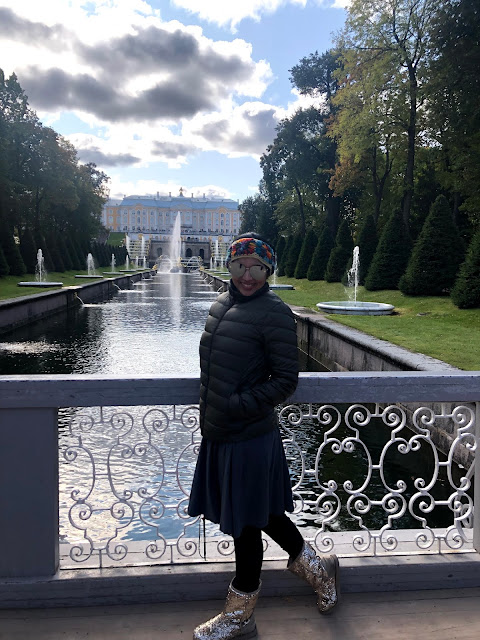The Peterhof Palace is a series of palaces and gardens located in Petergof, Saint Petersburg, Russia, commissioned by Peter the Great as a direct response to the Palace of Versailles by Louis XIV of France.
The Gгаnd Palace lies at the very heart of Peterhof — the former summer -the residence of the Russian monarchs
Facing the Gulf of Finland, the palace - rises above the Grand Cascade and the Lower Park, stretching along the upper terrace for almost three hundred yards. The original idea for the location and general appearance of the "Upper Chambers" — as the Grand Palace was first known — belonged to Peter the Great. Throughout the eighteenth and nineteenth centuries, the finest Russian and West European architects worked on the facades and the interior decor. But the greatest contribution was made by Bartolomeo Francesco Rastrelli, who transformed the Grand Palace into a masterpiece of Baroque art during the reign of Peter's illustrious daughter, Empress Elizabeth, in the eighteenth century. The Grand Palace is as beautiful on the inside as it is on the outside. In the nineteenth century, the ornate Baroque interiors were embellished with Neoclassical details and light touches of Late Rococo. The palace boasts such masterpieces of decorative art as the Oak Cabinet of Peter the Great with carved panels by Nicolas Pineau; the grand staircase and golden enfilade of state apartments; the Ball Room and the Picture Gallery with 368 paintings by Pietro Antonio Rotari; the Cesme Room created for Catherine the Great in honour of Russian naval victories; the Chinese Rooms and the Throne Room with its Romanov portrait gallery. Today, the Grand Palace is a unique museum of history and art.











































